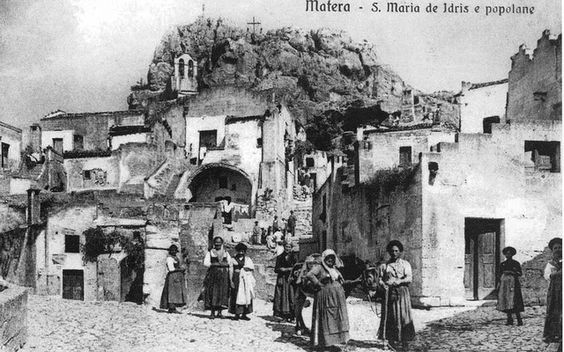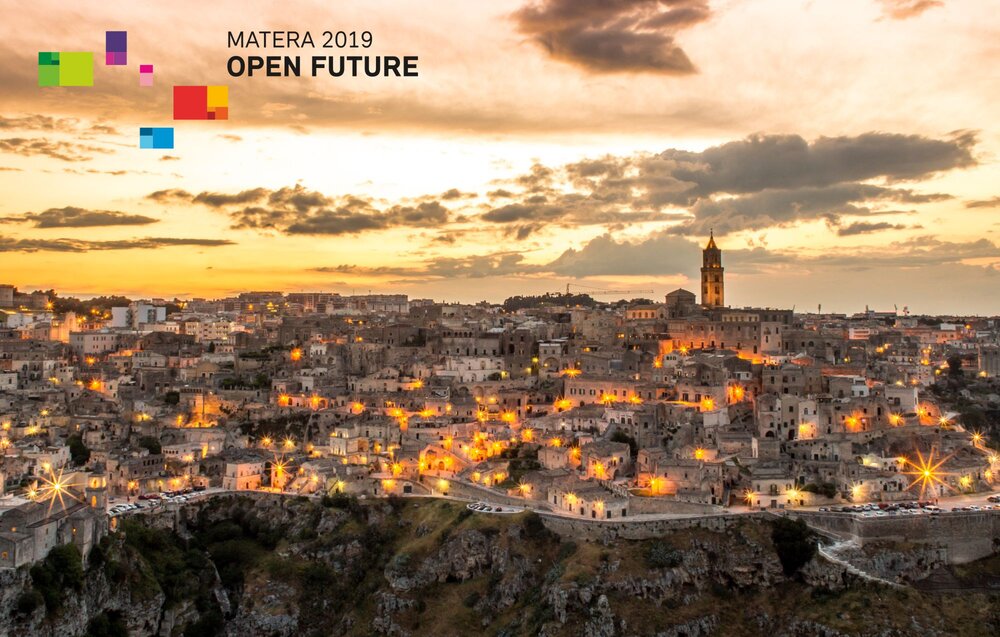History of Matera
Matera has had continuous human presence since the Paleolithic era, with artifacts displayed at the Ridola Archaeological Museum. Early on, natural caves were used for shelter, but during the Neolithic period, people began to carve out their own caves and build small hut villages. There are numerous traces from the Metal Ages and the Greek era, while evidence from the Roman period is scarce. The city as we know it today began to take shape during the Middle Ages (VIII sec d.C).
The oldest part of the city is the Civita, while the two nearby valleys, known as the Sassi, slowly began to be populated. At first, the Sassi had loosely spaced buildings for living and working, but over time, they became more crowded and eventually formed a unique urban area. During this period, the Sassi were home to people from all social classes, and the population density allowed for gardens, vineyards, and orchards. The carved-out sections of the Sassi were generally not used as living spaces because they were humid, dark, and had a constant temperature, making them better suited for other uses, such as cellars, olive presses, granaries, cheese storage, mills, water tanks, tanneries, snow storage, and stables. People lived in the built areas, while the carved-out spaces were used for production and storage, offering more advantages than cities without underground spaces.

Living conditions in the Sassi neighborhoods got worse throughout the 20th century. National attention was brought to this issue in 1945 with the publication of “Christ Stopped at Eboli,” a book by Carlo Levi. Although only a few pages focus on Matera and the cave homes in the Sassi, they became the defining description of the city’s decline during that time.Matera became a symbol of Southern Italy’s poverty. In 1952, the government passed a special law to improve the Sassi. Although the intention was to restore the area, it resulted in the Sassi being almost completely emptied, with residents relocating to new neighborhoods built by the state. After being abandoned and forgotten for decades, a slow restoration of the ancient neighborhoods began in the 1980s. In 1993, the Sassi of Matera were declared a UNESCO World Heritage site, and in 2014, Matera was named the European Capital of Culture for 2019

In the 19th century, the city’s economy declined steadily across all areas. The urban population grew quickly, especially among the poorer classes, leading to a high demand for housing. The Sassi’s carved-out spaces, once used for different activities like cellars, olive presses, or stables, were no longer suitable for those purposes and became a quick and cheap solution for housing. Many of these caves were turned into homes, the Sassi became overcrowded. In these cave homes, families often lived with a mule, needed for work in the fields, and other animals like chickens, making the already tough living conditions even worse.

Choose the Matera experience that best suits you
© 2021 Matera Private Tours – P.IVA 01361770777 – All Rights Reserved

